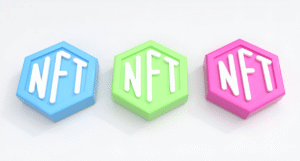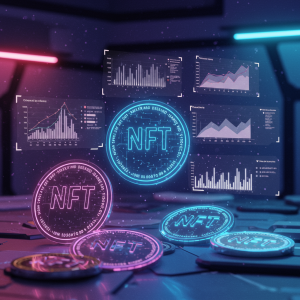NFT Royalty Mechanisms: How Artists Can Generate Perpetual Revenue

Creating digital art has never been more profitable than in the NFT era. Yet many creators still struggle to sustain long-term income. The solution? Royalty mechanisms—arguably the most revolutionary aspect of NFT technology that traditional art markets never managed to solve effectively.
Understanding NFT Royalties
Royalties in NFT markets represent a percentage of each secondary sale that automatically returns to the original creator. When someone resells your NFT creation for profit, you receive a predetermined cut of that transaction. Unlike physical artwork sales where artists typically earn only from initial purchases, NFT royalties ensure creators benefit from their work’s appreciation in value over time.
The implementation varies across platforms. Some marketplaces like SuperRare enforce rigid royalty structures, while others like OpenSea allow creators to set custom royalty percentages. Importantly, these royalties execute automatically through smart contracts, eliminating the need for manual tracking or enforcement.
Setting Up Your Royalty Stream
Establishing an effective royalty mechanism requires strategic planning. First, consider your target audience and market dynamics. Premium collectors often accept higher royalty percentages for quality work, while broader markets might be more price-sensitive.
Most creators set royalties between 5-15%, with 10% emerging as the industry standard. Setting excessively high royalties may discourage secondary trading, potentially reducing overall revenue despite the higher percentage. Finding the right balance proves crucial for sustainable income.
Smart contracts form the backbone of your royalty structure. These self-executing agreements contain the terms between buyer and seller directly written into code. When programming your NFT’s smart contract, ensure the royalty parameter is correctly implemented. A common mistake is failing to properly test the royalty mechanism before launching, resulting in lost revenue opportunities.
For creators uncomfortable with coding, several platforms on our homepage offer user-friendly interfaces to establish royalty parameters without requiring technical expertise.
Enforcement Challenges and Solutions
Despite their revolutionary nature, NFT royalties face enforcement challenges. Some marketplaces and traders actively work to circumvent royalty payments through various technical loopholes or by trading on platforms that don’t honor royalty structures.
To mitigate this issue, consider these approaches:
Selecting platforms with strong royalty enforcement policies significantly impacts your long-term revenue. Marketplaces implementing on-chain royalty enforcement provide the most reliable payment structures. Some creators also incorporate legal language in their NFT purchase agreements, though enforcement remains challenging across borders.
Building a community that values supporting creators represents perhaps the most effective long-term strategy. When collectors understand how royalties sustain ongoing creative work and development, they’re more likely to honor these systems rather than seeking ways around them.
Maximizing Royalty Revenue
Beyond basic setup, several strategies can enhance your royalty income. Creating collections with long-term utility encourages secondary market activity. NFTs that provide ongoing value through access, additional content, or community participation naturally generate more transactions.
Staggered releases maintain market activity over extended periods rather than creating brief spikes of interest. When collectors anticipate future releases that might complement existing holdings, trading activity remains more consistent.
Transparent communication about how royalty revenue funds ongoing project development builds collector trust. Demonstrating that secondary market fees directly contribute to ecosystem growth creates a virtuous cycle where trading activity ultimately benefits all stakeholders.
The Future of NFT Royalties
The royalty landscape continues evolving rapidly. Emerging standards aim to address current enforcement weaknesses. Some projects explore variable royalty structures that decrease over time or adjust based on profit margins to better balance creator and collector interests.
Cross-platform enforcement mechanisms represent the most promising development. New protocols seek to establish royalty standards that work across the entire ecosystem rather than being limited to specific marketplaces.
NFT royalties fundamentally transform creator economics by establishing genuine passive income streams that reflect a work’s ongoing market value. By thoughtfully implementing royalty mechanisms, artists transition from one-time sales to building sustainable revenue that grows alongside their reputation and collection value.
For creators serious about long-term sustainability in the NFT space, mastering royalty mechanisms isn’t optional—it’s essential.








